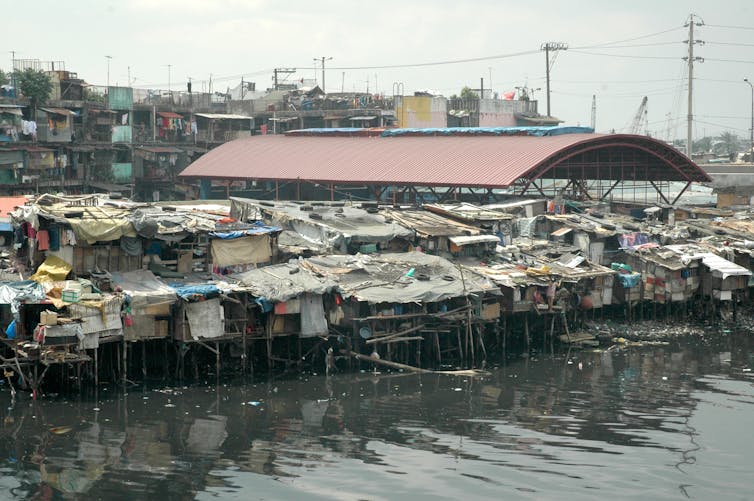Last week, a strong typhoon left a trail of destruction across the Philippines, Taiwan and China. Super Typhoon Gaemi began as a tropical storm but intensified rapidly, leaving at least 65 people dead and triggering environmental fears after it sank an oil tanker in Manila Bay.
The Philippines was hard hit. More than 470 millimetres of rain fell in 24 hours in some regions. The intense storm affected more than 3.3 million Filipinos and forced more than 1 million to leave their homes.
Why was it so bad? President Ferdinand Marcos Jr. had a clear view, saying: “This is what the effects of climate change are”.
Climate change certainly played a role. The typhoon intensified fast over very warm seas, reaching top wind speeds of 230 kilometres per hour. Early analysis indicates the storm was likely strengthened by climate change, given the backdrop of the warmest ocean temperatures on record.
But as extreme weather becomes more common and intense, there’s a growing risk leaders in affected countries can use climate change to dodge responsibility for adaptation. Climate change warms the seas and warm water is fuel for more severe hurricanes, cyclones and typhoons. But the damage a storm does can be made much worse if governments do not design and prepare cities and infrastructure – as we have just seen in the Philippines.
Hiding in plain sight
The Philippines has the highest disaster risk of any country. The Pacific archipelago nation stretches 1,850km north to south and lies directly in the path of many typhoons. The nation is also on the Ring of Fire, putting it at risk from earthquakes and volcanic eruptions.
But disaster risk isn’t just about how many disasters strike. It’s also about how vulnerable a country is, on both social and infrastructure fronts. Recent research has found the capital of the Philippines, Manila, is particularly vulnerable.
Manila is one of the densest cities in the world, housing more than 42,000 people per square kilometre. An estimated 15 million people now live in the metropolitan Manila region – ten times the population in 1950. Several large rivers and about 30 tributaries run through the city.
As the city has grown, concrete surfaces have multiplied and green space has shrunk. Gutters, stormwater drains and flood management infrastructure have not kept pace.
The scale of flooding this week has brought back memories of Typhoon Ketsana (known as Ondoy in the Philippines) which hit Manila in 2009. Some areas went under three metres of floodwater.
Super Typhoon Gaemi has had a similar impact. Roads became impassable. Rivers broke their banks. Residents of informal settlements – often built near rivers – had to flee. The city’s drains could not cope.

Intense rainfall in the catchments forced dam managers to open floodgates, compounding flooding from urban rainfall.
Floodwaters carry debris and waste through cities and homes. When they recede, they leave behind a higher risk of disease.
Flood damage is projected to worsen by the end of the decade, as urbanisation continues without enough infrastructure investment.
The Philippines government claims poor waste management contributed to the flooding, saying dumped garbage blocked waterways and clogged drainage systems.
Certainly, poor waste management can make flooding worse. But we cannot simply say the scale of this disaster is due to waste management issues, just as we can’t say climate change was solely to blame. Sprawling, wide-reaching disasters like this have many causes.
What would it take to cut disaster risk?
As climate change loads the dice for more and worse disasters, leaders in the Philippines will have to tackle their nation’s systemic vulnerabilities to disaster, as will other frontline nations.
We’re starting to see evidence climate-boosted disasters hit people in emerging urban centres harder. Typhoons are at their most lethal when they strike fast-growing megacities in emerging economies.
In 2007, the world passed an urbanisation milestone. For the first time in recorded human history, more people lived in cities than in rural areas. Since then, urbanisation has only accelerated, as people from rural areas head to burgeoning megacities such as Lagos in Nigeria and Dhaka in Bangladesh. But residents of these cities are often more at risk from flooding and other climate-boosted extreme weather events.
What can we do? As Filipinos braced for Typhoon Gaemi, many frantically looked for information. Data on dangerous flood areas from open access hazard assessment tools proved useful to boost individual preparedness.
But governments must actually plan for and tackle root causes of flooding to make fast-growing cities better able to resist the disasters of the future.
University of Sydney Masters students Sheryn See and Isaac Besarra contributed to this article.
Emily Nabong receives funding from the Asia-Pacific Network for Global Change Research.
Aaron Opdyke receives funding from the Asia-Pacific Network for Global Change Research.
This article was originally published on The Conversation. Read the original article.







